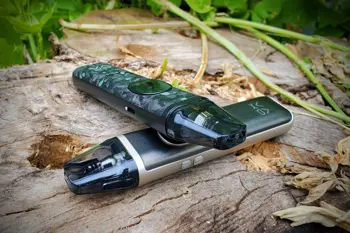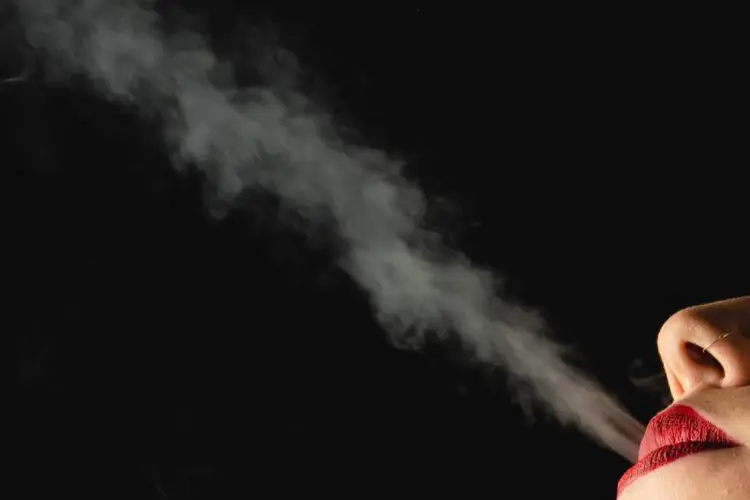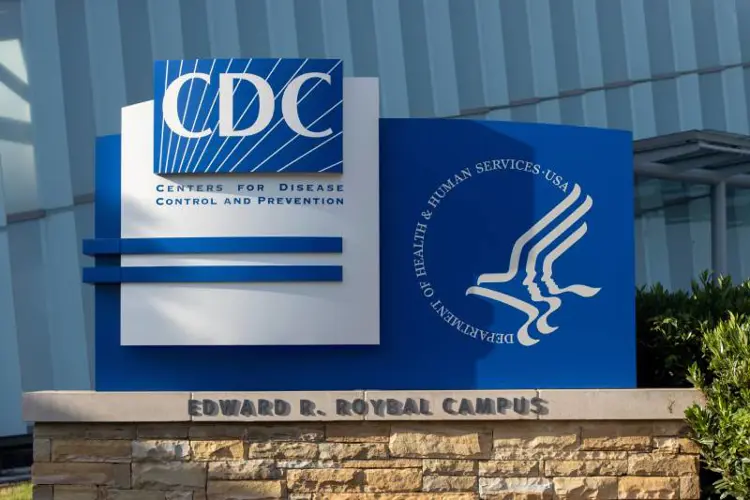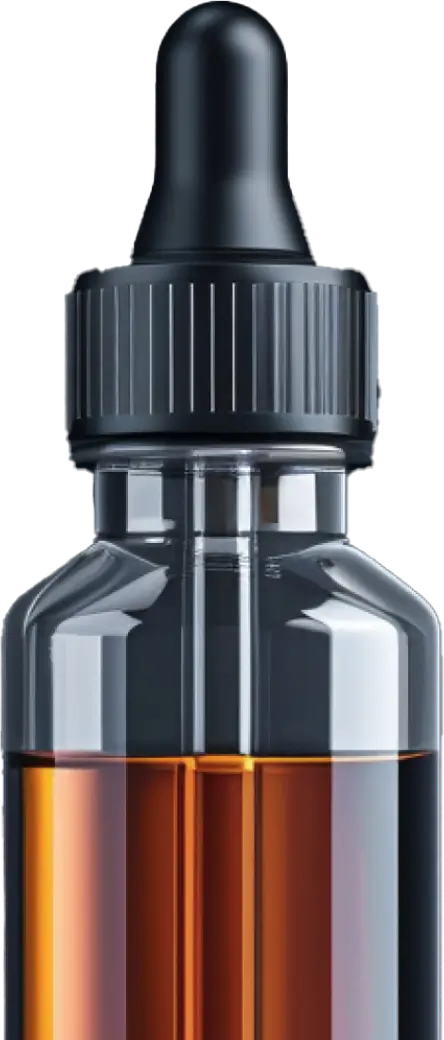New survey results released by the CDC show a 29 percent drop in teenage vaping from 2019 to 2020, bringing it to levels last seen before 2018. Of course, the CDC and FDA have chosen another way to present the results.
The selected results (but not the data they came from) were part of a CDC report published Sept. 9—the same day that was the deadline for vaping manufacturers to submit Premarket Tobacco Applications or remove their products from the market. The data will be available, along with an analysis of all the results, sometime in December.
Past-30 day use (called “current use”) among high school students fell from 27.5 percent to 19.6 percent, and the drop among middle schoolers was even more dramatic, from 10.5 to 4.7 percent. That’s good news, right? Well...
“Although these data reflect a decline in current e-cigarette use since 2019,” the CDC and FDA analysts write, “3.6 million U.S. youths still currently used e-cigarettes in 2020, and among current users, more than eight in 10 reported using flavored e-cigarettes.”
The authors suggest that because flavored products still exist, teen vaping will never drop to a level (zero) that will satisfy the demanding CDC and FDA tobacco control poohbahs. So the report goes into great detail about the flavor preferences of these occasional users, noting that fruit, mint, and menthol are the most popular flavor types among all teen vapers. The implication that flavors drive usage by adolescents is tiresome, but some of the analysis is interesting.
For example, among “current users of flavored prefilled pods and cartridges, the most commonly used flavor types were fruit (66.0%; 920,000); mint (57.5%; 800,000); menthol (44.5%; 620,000); and candy, desserts, or other sweets (35.6%; 490,000).”
But Juul Labs, which makes what is supposedly the most popular vape among teenagers, had removed their fruit pods from the market more than a year before the survey was completed. None of the other major legal manufacturers of prefilled pods were selling fruit- or candy-flavored products at the time of the survey either. That suggests that a large chunk of “current users” were vaping gray- and black-market products like Juul-compatible pods made by unauthorized manufacturers.
“As long as any flavored e-cigarettes are left on the market, kids will get their hands on them and we will not solve this crisis,” said Campaign for Tobacco Free Kids President Matthew Myers. Of course, that applies to the black market too. Prohibition of flavors won’t lead to abstinence, just to purchases from new and questionable sources.
The CDC report makes a point of mentioning that disposable product use grew from 2.4 percent in 2019 to 26.5 percent in 2020—a 1,000 percent increase!—without explaining that those products were largely a black market response to the legal pod manufacturers’ decision to drop flavors, and later to the FDA’s decision to prioritize enforcement against pod-based products. (There is an entertaining conspiracy theory that suggests the FDA’s decision to exempt disposable vapes from its January 2020 enforcement guidance was an experiment to see if the illicit vape market would respond quickly. It did.)
The bottom line is that high school vaping dropped by about a third, and middle school vaping by more than half. The fact that over 80 percent of teenagers use flavored vaping products is a red herring, because we already know that most adult vapers also prefer non-tobacco flavors, and that flavors aren’t one of the primary reasons that kids try vaping.
There are other problems with the NYTS aside from the obsession with flavors. CDC has removed specific questions about cannabis vaping from the survey, leaving participants to decide whether the questions apply to both THC and nicotine vapes. We don’t know how many of the kids taking the survey are THC vapers, because the CDC assumes they’re all vaping nicotine, and reports the results as though they are.
It could be that (very sensible) fear ofthe illicit THC vape cartridges that caused “EVALI” pushed many school-age cannabis oil vapers to stop using those products. We just don’t know how big a part illicit hash oil vapes played in the 2018-19 "youth vaping epidemic,” but we do know that those products were rapidly gaining in popularity among young cannabis users during that very period (2017-2019).
Another problem with the preliminary results: CDC decided not to provide preliminary 2020 smoking figures. Last year past-30 day cigarette use dropped to an all-time low of 5.8 percent for high school students, and just 2.3 percent among middle schoolers. Did that trend continue in 2020—or did the decline in vaping cause a corresponding increase in deadly cigarette smoking? We won’t know till sometime in December, because for whatever reason, CDC didn't want us to see those results now.
The “tradition” of releasing partial preliminary results from the NYTS was begun in 2018 by then-FDA Commissioner Scott Gottlieb, who wanted to show something concrete to back up his claim that a “disturbing” teen vaping trend was underway. But he spent months setting the stage before producing numbers to back his loose talk.
“I believe there’s an epidemic of youth use,” Gottlieb said on Sept. 11, 2018. “We have good reason to draw this conclusion based on the trends and data that we’ve seen, some of which is still preliminary and will be finalized in the coming months and presented publicly.”
Gottlieb threatened to ban flavored products and pull the most popular c-store pod vapes off the market. A week later, the FDA announceda new anti-vaping media campaign. The centerpiece was a slick TV commercial called “Epidemic,” which the brilliant minds in the tobacco control office at the FDA apparently believed would scare thrill-seeking teens away from vaping.
When the preliminary 2018 NYTS results were finally pushed out in November, the news media—primed by Gottlieb, the ad campaign, and the endless drumbeat of anti-vaping propaganda from anti-tobacco groups—melted down. The high school “current use” rate had jumped from 11.7 to 20.8 percent!
What the agencies hadn’t done—because they didn’t want to—was provide context. The evidence of a terrifying epidemic was largely based on past-30 day use, which is a dubious standard to measure problematic drug behavior. Using something once in the last month is hardly evidence of habitual use, let alone “addiction.” It may show nothing more disturbing than a fad.
Careful analysis of the 2018 NYTS results by researchers from New York University (and other universities) showed that just 0.4 percent of the survey participants had never used other tobacco products and vaped on 20 or more days a month. In other words, most frequent high school vapers had already smoked.
“Vaping increased among US youth in 2018 over 2017. The increases are characterized by patterns of low [past-30 day] vaping frequency and high poly-product use, and a low prevalence of vaping among more frequent but tobacco naïve vapers,” the authors concluded.
When the 2019 NYTS showed another increase, from 20.8 to 27.5 percent, the terrified response by authorities and media was predictable; it was really just muscle memory. But the story hadn’t changed. A group of British academics that looked at the results of both the 2018 and 2019 CDC surveys agreed with the analysis of the NYU group.
“Frequent use occurred in 1.0% of otherwise tobacco naive users in 2018 and 2.1% in 2019,” they wrote. “Among otherwise tobacco naive past-30-day e-cigarette users in 2019, 8.7% reported craving and 2.9% reported wanting to use within 30 minutes of waking.”
Those results don’t indicate that kids are “hooked” or “addicted,” as the Campaign for Tobacco-Free Kids and Truth Initiative trumpeted in their press releases. Past-30 day use represents mostly experimentation, not habitual use. “Addictions” don’t hit historic highs one year and drop 30 percent the next—but youthful fads regularly rise and fall rapidly in patterns just like that.
The unspoken truth is that American teenagers don’t vape any more often or more intensely than those from the U.K. or anywhere else. But U.S. authorities define adolescent vaping in a way intended to provoke terror in adults. And as long as they're able to achieve the intended effect, nothing is likely to change.
The Freemax REXA PRO and REXA SMART are highly advanced pod vapes, offering seemingly endless features, beautiful touchscreens, and new DUOMAX pods.
The OXVA XLIM Pro 2 DNA is powered by a custom-made Evolv DNA chipset, offering a Replay function and dry hit protection. Read our review to find out more.
The SKE Bar is a 2 mL replaceable pod vape with a 500 mAh battery, a 1.2-ohm mesh coil, and 35 flavors to choose from in 2% nicotine.
Because of declining cigarette sales, state governments in the U.S. and countries around the world are looking to vapor products as a new source of tax revenue.
The legal age to buy e-cigarettes and other vaping products varies around the world. The United States recently changed the legal minimum sales age to 21.
A list of vaping product flavor bans and online sales bans in the United States, and sales and possession bans in other countries.


















